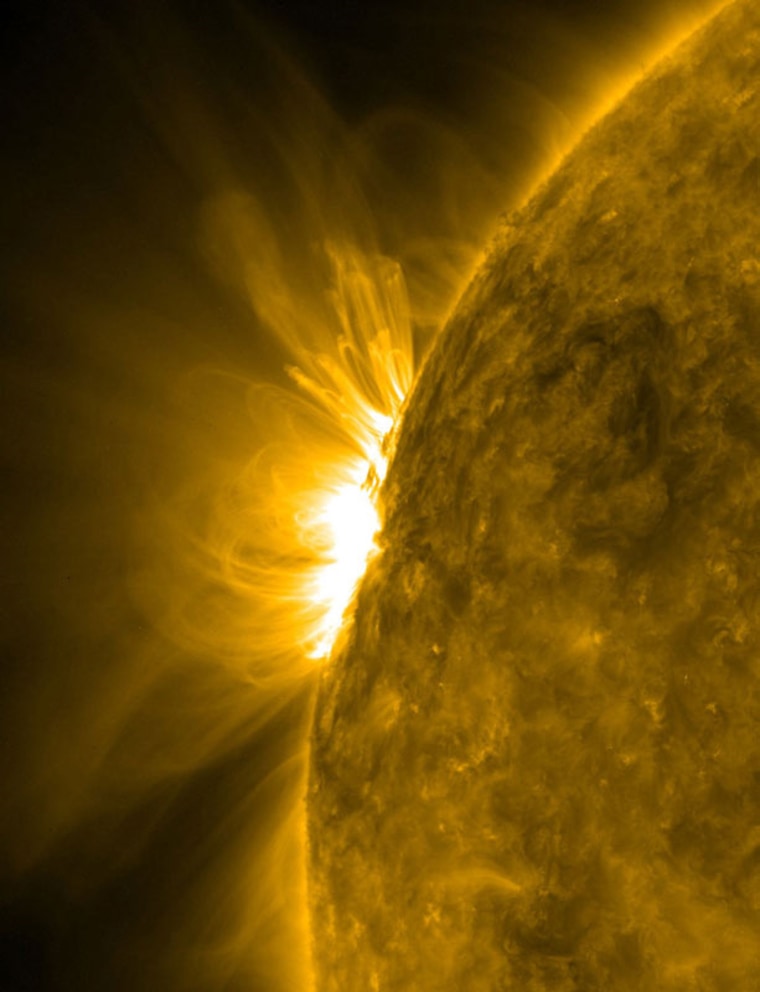A powerful NASA spacecraft has caught a cluster of glowing magnetic loops bursting from the sun while watching a particularly active solar hotspot.
The new views of the sun were recorded by NASA's Solar Dynamics Observatory (SDO) in the extreme ultraviolet range of the light spectrum over several days, beginning July 6. A video still of the arcing magnetic loops was recently released by NASA's Goddard Space Flight Center in Greenbelt, Md.
The arcing solar material is blazing-white at the sun's surface, then fades to dull, hot orange near the apex. Smoky wisps blur the outlines of larger loops, while smaller ones appear to vanish among the bright, crowded others.
The arcs are the routes taken by solar particles following the whipping loops ever-changing magnetic field lines on the surface of the sun. Small solar flares, hidden from SDO's view, also emerged from the sun in this area of intense activity.
Launched in February, NASA's Solar Dynamics Observatory is flying on a planned five-year mission to study the sun in unprecedented detail. The spacecraft is equipped to record high-definition views of active solar regions at a never-before-achieved resolutions.
Solar storms like those seen by SDO tend to follow an 11-year activity cycle and can range from relative quiescence to fierce eruptions that can travel to all the Earth depending on their direction..
During the active period of the cycle, solar weather monitoring is especially important because it can pose a risk to satellites and astronauts in space.
